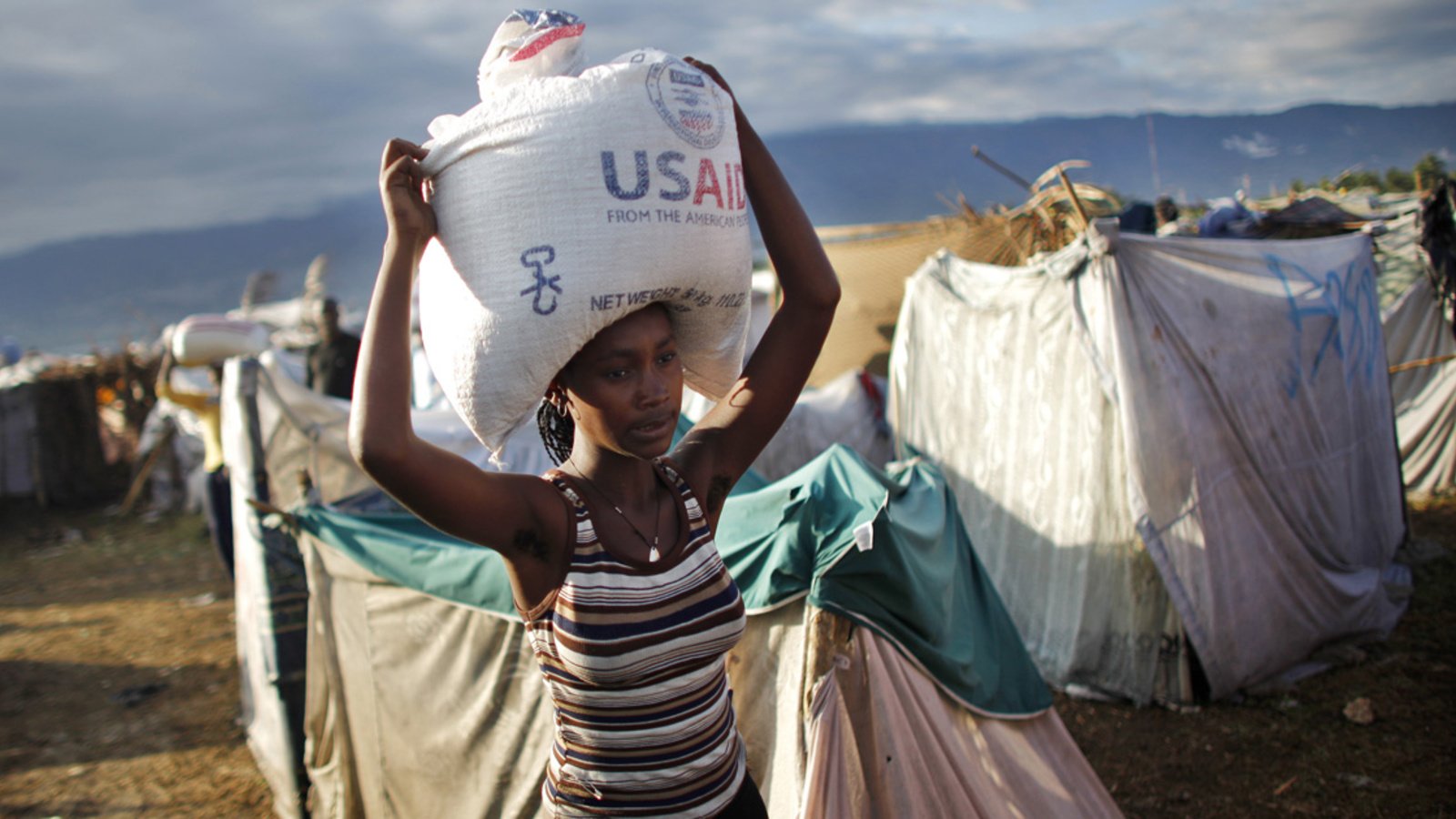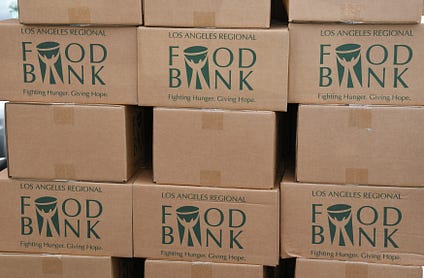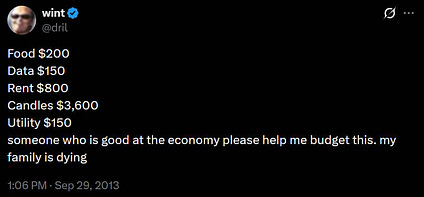Foreign aid from the United States saved millions of lives each year – Our World in Data

Report on United States Foreign Aid Contributions to the Sustainable Development Goals
Executive Summary
This report analyzes the impact of United States foreign aid, with a specific focus on its contributions to the United Nations Sustainable Development Goals (SDGs), particularly SDG 3 (Good Health and Well-being). In 2023, the U.S. was the largest global donor in absolute terms, contributing $62 billion. While this represents a small fraction of its Gross National Income (0.24%), the funding has been instrumental in advancing global health targets. Analysis indicates that U.S.-funded programs saved an estimated three million lives annually, directly supporting the 2030 Agenda for Sustainable Development. This report details the quantitative impact of this aid, examines key programs, and discusses the implications of recent funding changes on the achievement of the SDGs.
Analysis of U.S. Foreign Aid in the Context of SDG 17 (Partnerships for the Goals)
The United States’ role as a leading donor is a critical component of the global partnership for sustainable development, as outlined in SDG 17. This partnership is essential for mobilizing resources to achieve the other 16 goals.
Key Donor Statistics (2023)
- Total Aid Contribution: $62 billion, the largest sum from any single nation.
- Comparative Scale: Equivalent to the combined contributions of the next three largest donors (Germany, Japan, United Kingdom).
- Contribution relative to GNI: 0.24%, the smallest share among the top ten largest donors.
Administrative Structure and Recent Changes
The primary agency for delivering U.S. development assistance has been the United States Agency for International Development (USAID), which managed approximately 61% ($43.8 billion) of the total foreign assistance budget. The recent dissolution of USAID and significant cuts to other aid programs represent a substantial shift in the U.S. commitment to SDG 17, posing a risk to the continued progress on global development targets.
Quantitative Impact on SDG 3 (Good Health and Well-being)
U.S. foreign aid has made measurable contributions to several targets within SDG 3. An analysis by the Center for Global Development provides a central estimate of 3.3 million lives saved annually through key health interventions, with a plausible range of 2.3 to 5.6 million.
Estimated Annual Lives Saved by Intervention Area
- HIV/AIDS Programs: 1.6 million lives saved, directly addressing SDG Target 3.3 to end the AIDS epidemic.
- Humanitarian Aid: 550,000 lives saved, supporting health in crisis situations.
- Vaccination Programs: 500,000 lives saved, contributing to SDG Target 3.2 to end preventable deaths of newborns and children.
- Tuberculosis Programs: 310,000 lives saved, advancing SDG Target 3.3 to end the tuberculosis epidemic.
- Malaria Programs: 290,000 lives saved, crucial for achieving SDG Target 3.3 to end the malaria epidemic.
These estimates primarily focus on direct health interventions and do not include the additional lives saved through programs related to SDG 2 (Zero Hunger), SDG 6 (Clean Water and Sanitation), or family planning services.
Programmatic Contributions to Specific SDG 3 Targets
Case Study 1: PEPFAR and the Fight Against HIV/AIDS (SDG Target 3.3)
The U.S. President’s Emergency Plan for AIDS Relief (PEPFAR), initiated in 2003, is a landmark program in global health. Its impact aligns directly with the goal of ending the AIDS epidemic.
- Total Lives Saved: The U.S. State Department estimates that PEPFAR has saved 25 million lives since its inception.
- Treatment Access: In 2023, PEPFAR provided antiretroviral therapy (ART) to over 20 million people.
- Preventing Mother-to-Child Transmission: A key success has been preventing HIV transmission from mothers to their children, saving millions of infants and contributing to SDG Target 3.2 (ending preventable child deaths).
Case Study 2: The President’s Malaria Initiative (SDG Target 3.3)
Through the President’s Malaria Initiative (PMI) and contributions to The Global Fund, the U.S. has been a leader in combating malaria, a major cause of child mortality in Sub-Saharan Africa.
- Estimated Annual Impact: U.S. aid is estimated to have prevented approximately 293,000 malaria deaths annually.
- Key Interventions Funded:
- Insecticide-treated bednets
- Indoor residual spraying
- Preventive medicine for children
- Diagnostics and treatment
Broader Contributions to the 2030 Agenda
While the most quantifiable impact has been on SDG 3, U.S. foreign aid has also supported other critical goals.
- SDG 1 (No Poverty): By improving health outcomes, aid helps break the cycle of poverty and disease.
- SDG 2 (Zero Hunger): Aid programs have worked to boost food production and reduce malnutrition.
- SDG 10 (Reduced Inequalities): Funding has often targeted the most vulnerable populations in low-income countries, addressing health and economic disparities.
Implications of Aid Reductions and Public Perception
Risks to SDG Attainment
The dismantling of USAID and cuts to foreign aid budgets present a direct threat to the progress made on the SDGs. The reduction in funding for life-saving medications, treatments, and humanitarian support is projected to reverse decades of progress and result in a significant loss of life, undermining the global commitment to “leave no one behind.”
Public Perception vs. Reality
Public support for foreign aid is often influenced by misconceptions about its scale. Surveys indicate a significant disconnect between public perception and the actual allocation of funds.
- Overestimation of Spending: A KFF poll found the average American believes 26% of the federal budget is spent on foreign aid. A significant portion (30%) believed the figure was one-third or more.
- Actual Spending: The real figure is approximately 1% of the U.S. federal budget.
- Informed Support: When informed of the actual 1% figure, the proportion of respondents believing the U.S. spends “too much” on aid dropped from 58% to 34%.
- Support for Health Aid: There is strong bipartisan support for specific health-related aid, with 83% of Americans supporting aid for medicine and medical supplies.
This data suggests that improved public understanding of the cost-effectiveness and impact of foreign aid could strengthen support for policies aligned with achieving the Sustainable Development Goals.
Analysis of Sustainable Development Goals in the Article
1. Which SDGs are addressed or connected to the issues highlighted in the article?
-
SDG 1: No Poverty
The article mentions that American foreign aid has contributed to “alleviating poverty in low-income countries,” directly linking the aid programs to the primary goal of SDG 1.
-
SDG 2: Zero Hunger
The text states that foreign aid has helped in “boosting food production and reducing malnutrition.” This aligns with SDG 2’s objective to end hunger and improve nutrition.
-
SDG 3: Good Health and Well-being
This is the most prominent SDG in the article. The entire analysis focuses on the number of lives saved through health-related interventions, specifically mentioning programs targeting HIV/AIDS, tuberculosis, malaria, and vaccine distribution.
-
SDG 6: Clean Water and Sanitation
Although not a primary focus, the article explicitly notes that its estimates of lives saved do not include the impact of programs for “improved access to clean water and sanitation,” acknowledging this as another area of foreign aid contribution relevant to SDG 6.
-
SDG 17: Partnerships for the Goals
The article is fundamentally about foreign aid, which is a key component of global partnerships. It discusses the role of the United States as the world’s largest donor in total dollars, the percentage of its Gross National Income (GNI) dedicated to aid, and the structure of this aid through agencies like USAID. This directly relates to the mechanisms for achieving the SDGs through international cooperation.
2. What specific targets under those SDGs can be identified based on the article’s content?
-
Under SDG 3: Good Health and Well-being
- Target 3.3: By 2030, end the epidemics of AIDS, tuberculosis, malaria and neglected tropical diseases… The article provides a detailed breakdown of lives saved through programs targeting these specific diseases: “AIDS programs saved the largest number of lives: over 1.5 million per year,” with hundreds of thousands more saved from tuberculosis and malaria interventions.
- Target 3.2: By 2030, end preventable deaths of newborns and children under five years of age. The article highlights that “Millions of babies who would have been born with HIV were instead born healthy,” indicating a direct impact on child mortality. It also mentions that aid for malaria includes “seasonal preventive medicine for children.”
- Target 3.8: Achieve universal health coverage, including… access to safe, effective, quality and affordable essential medicines and vaccines for all. The article discusses the provision of vaccines, which saved an estimated 500,000 lives annually, and the distribution of “life-saving medication” like antiretroviral therapy through PEPFAR.
-
Under SDG 17: Partnerships for the Goals
- Target 17.2: Developed countries to implement fully their official development assistance commitments… The article directly addresses this target by analyzing the United States’ contribution to foreign aid. It states, “the US gave the smallest share of its national income: 0.24% of gross national income (GNI),” which is a key metric for this target.
3. Are there any indicators mentioned or implied in the article that can be used to measure progress towards the identified targets?
-
For Target 3.3 (End epidemics):
- The article provides a direct, outcome-based indicator: the estimated number of lives saved annually by specific disease interventions.
- HIV/AIDS: 1.6 million lives saved per year.
- Tuberculosis: 310,000 lives saved per year.
- Malaria: 290,000 lives saved per year.
- It also mentions the number of people receiving treatment through a specific program: “In 2023 alone, over 20 million people globally received antiretroviral therapy through PEPFAR.” This serves as an indicator of access to treatment.
- The article provides a direct, outcome-based indicator: the estimated number of lives saved annually by specific disease interventions.
-
For Target 3.8 (Universal Health Coverage):
- The number of lives saved by vaccines (500,000 per year) is an implied indicator of the effectiveness and reach of vaccination programs funded by foreign aid.
-
For Target 17.2 (ODA commitments):
- Indicator 17.2.1 (Net official development assistance as a proportion of GNI): The article explicitly provides this data for the United States: “0.24% of gross national income (GNI).”
- It also provides the total volume of aid in dollars: “It gave $62 billion” in 2023.
4. Summary Table of SDGs, Targets, and Indicators
| SDGs | Targets | Indicators |
|---|---|---|
| SDG 3: Good Health and Well-being |
Target 3.3: End the epidemics of AIDS, tuberculosis, and malaria.
Target 3.2: End preventable deaths of newborns and children under five. Target 3.8: Achieve universal health coverage, including access to essential medicines and vaccines. |
– Estimated annual lives saved from HIV/AIDS programs: 1.6 million. – Estimated annual lives saved from Tuberculosis programs: 310,000. – Estimated annual lives saved from Malaria programs: 290,000. – Number of people receiving antiretroviral therapy through PEPFAR in 2023: Over 20 million. – Prevention of mother-to-child HIV transmission. – Estimated annual lives saved from vaccines: 500,000. |
| SDG 17: Partnerships for the Goals | Target 17.2: Developed countries to implement their official development assistance (ODA) commitments. |
– Total foreign aid from the US in 2023: $62 billion. – US foreign aid as a proportion of GNI: 0.24%. |
| SDG 1: No Poverty | General goal of alleviating poverty. | The article mentions aid contributes to “alleviating poverty,” but provides no specific indicators. |
| SDG 2: Zero Hunger | General goal of reducing malnutrition. | The article mentions aid contributes to “reducing malnutrition,” but provides no specific indicators. |
| SDG 6: Clean Water and Sanitation | General goal of improving access to clean water and sanitation. | The article mentions aid for “clean water and sanitation” but does not include it in its quantitative analysis. |
Source: ourworldindata.org

What is Your Reaction?
 Like
0
Like
0
 Dislike
0
Dislike
0
 Love
0
Love
0
 Funny
0
Funny
0
 Angry
0
Angry
0
 Sad
0
Sad
0
 Wow
0
Wow
0















































/environment-climate-change-and-health-(ech)/water-sanitation-hygiene-and-health-(wsh)/landfill-tuvalu-36092.tmb-1200v.jpg?sfvrsn=5c21fe40_1#)


.jpg.webp?itok=0ZsAnae9#)

























